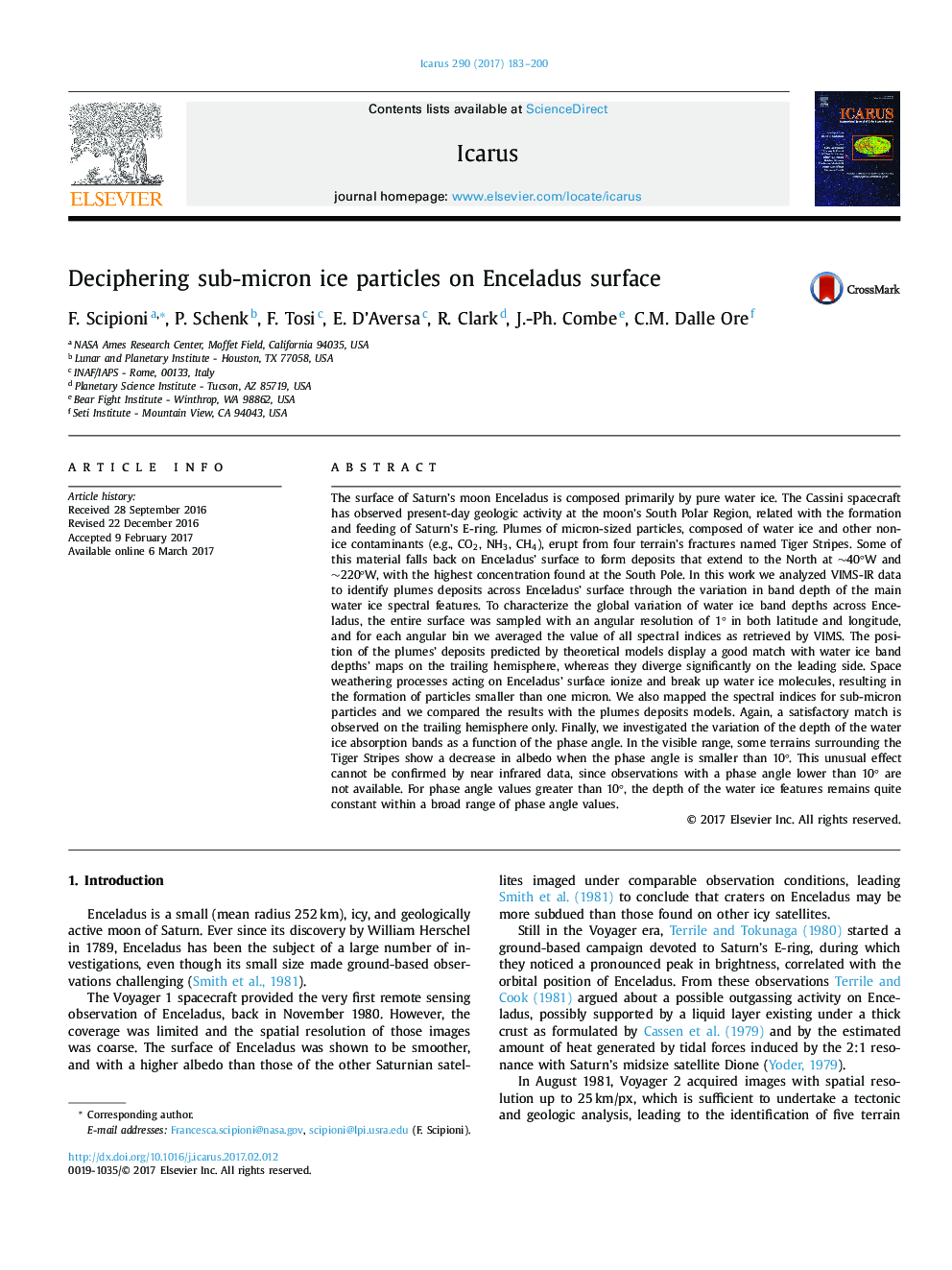| کد مقاله | کد نشریه | سال انتشار | مقاله انگلیسی | نسخه تمام متن |
|---|---|---|---|---|
| 5487043 | 1523501 | 2017 | 18 صفحه PDF | دانلود رایگان |
عنوان انگلیسی مقاله ISI
Deciphering sub-micron ice particles on Enceladus surface
ترجمه فارسی عنوان
تفکیک ذرات یخ زیر میکرونی در سطح انسلادو
دانلود مقاله + سفارش ترجمه
دانلود مقاله ISI انگلیسی
رایگان برای ایرانیان
موضوعات مرتبط
مهندسی و علوم پایه
علوم زمین و سیارات
علوم فضا و نجوم
چکیده انگلیسی
The surface of Saturn's moon Enceladus is composed primarily by pure water ice. The Cassini spacecraft has observed present-day geologic activity at the moon's South Polar Region, related with the formation and feeding of Saturn's E-ring. Plumes of micron-sized particles, composed of water ice and other non-ice contaminants (e.g., CO2, NH3, CH4), erupt from four terrain's fractures named Tiger Stripes. Some of this material falls back on Enceladus' surface to form deposits that extend to the North at â¼40°W and â¼220°W, with the highest concentration found at the South Pole. In this work we analyzed VIMS-IR data to identify plumes deposits across Enceladus' surface through the variation in band depth of the main water ice spectral features. To characterize the global variation of water ice band depths across Enceladus, the entire surface was sampled with an angular resolution of 1° in both latitude and longitude, and for each angular bin we averaged the value of all spectral indices as retrieved by VIMS. The position of the plumes' deposits predicted by theoretical models display a good match with water ice band depths' maps on the trailing hemisphere, whereas they diverge significantly on the leading side. Space weathering processes acting on Enceladus' surface ionize and break up water ice molecules, resulting in the formation of particles smaller than one micron. We also mapped the spectral indices for sub-micron particles and we compared the results with the plumes deposits models. Again, a satisfactory match is observed on the trailing hemisphere only. Finally, we investigated the variation of the depth of the water ice absorption bands as a function of the phase angle. In the visible range, some terrains surrounding the Tiger Stripes show a decrease in albedo when the phase angle is smaller than 10°. This unusual effect cannot be confirmed by near infrared data, since observations with a phase angle lower than 10° are not available. For phase angle values greater than 10°, the depth of the water ice features remains quite constant within a broad range of phase angle values.
ناشر
Database: Elsevier - ScienceDirect (ساینس دایرکت)
Journal: Icarus - Volume 290, 1 July 2017, Pages 183-200
Journal: Icarus - Volume 290, 1 July 2017, Pages 183-200
نویسندگان
F. Scipioni, P. Schenk, F. Tosi, E. D'Aversa, R. Clark, J.-Ph. Combe, C.M. Dalle Ore,
